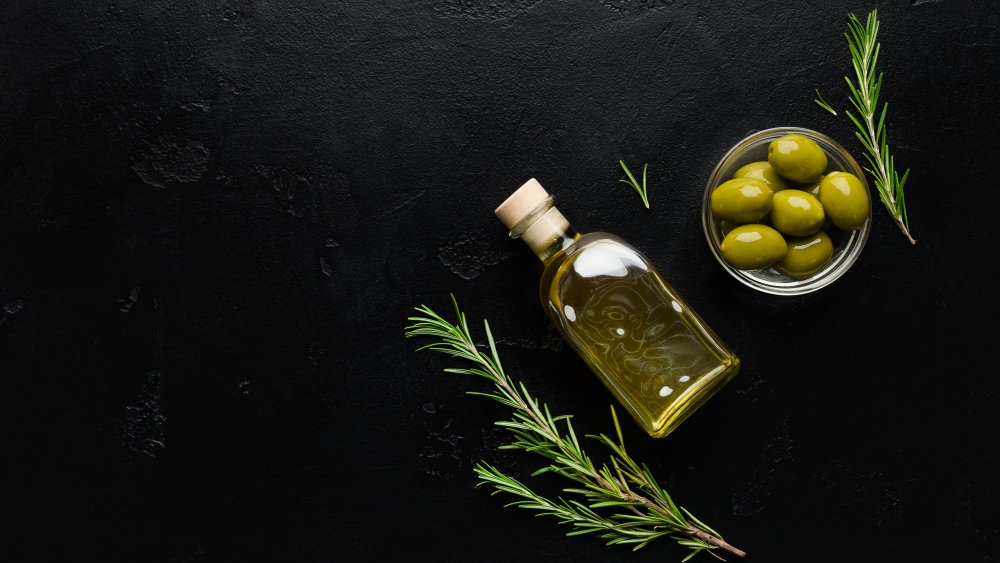What's The Difference Between Regular And Extra-Virgin Olive Oil?
We've all been in the olive oil aisle of the grocery store faced with dozens of options ranging anywhere from a few dollars in cost all the way up to hundreds of dollars per bottle. It can feel completely overwhelming and confusing, and we're left wondering if the extra cash is worth it when it comes to the extra-virgin stuff.
So, olive oil and extra-virgin olive oil are basically the same thing, right? Wrong! The two differ in flavor, their response to heat, and overall quality. Yes, they both come from olives, but the extraction and processing techniques are quite different between the oils. The classic olive oil is lighter in color and typically the most affordable olive based oil. It's most often a blend of cold-pressed olive and refined oil. The oil usually has been treated with chemicals or heat in order to remove any impurities. The final product has a fairly plain flavor and can withstand the highest temperature compared to the rest of the olive oil family (via Southern Living).
Extra-virgin olive oil has more varied flavor
Extra-virgin olive oil is the highest grade of the olive oil family. This oil has not been treated with chemicals or heat but instead it has been cold-pressed from the fruit of the olive. The end product of this process is an oil that is far superior in quality, nutrients, flavor, and color (via Berkeley Wellness).
With regular olive oil, the flavor profile is more limited, where the flavors of extra-virgin olive oil are far more varied and unrestricted. Depending on the olive variety as well as the cold-press method, extra-virgin olive oils can range in flavor from herbal and fruity to peppery and bitter. When you utilize the fancy stuff you can add to the flavor profiles of your dish, particularly when using it as a finishing oil — just remember to use caution when cooking as extra-virgin olive oil does burn more easily than regular varieties.

